Better sow performance with higher water intake
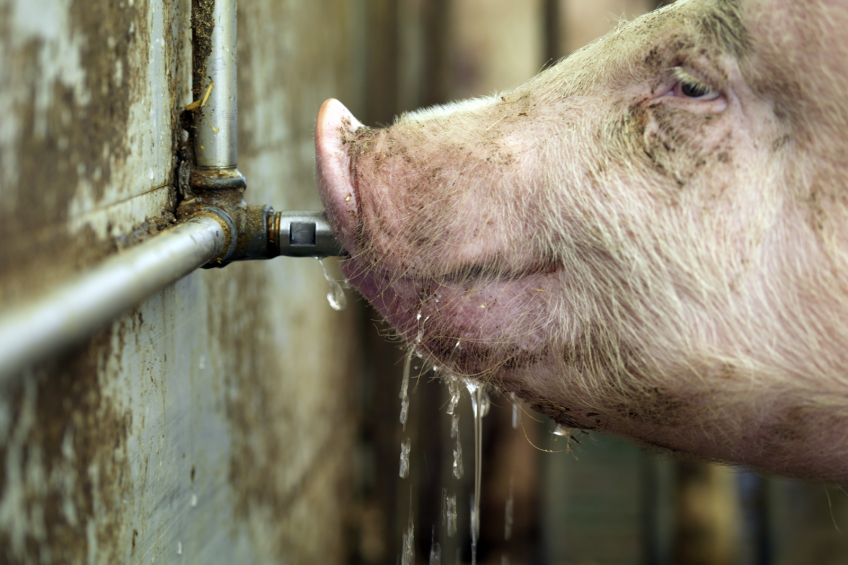
Sows have a high water requirement during gestation and lactation. Clean and fresh water is therefore essential. Water hygiene can be improved by using organic acids, as this leads to higher water intake and lower salmonella and E. coli prevalence.
By Sarah Pesie, technical communication manager; and Juan Antonio Mesonero Escuredo, product manager, Selko Feed Additives, the Netherlands
Over the last 20 years the average litter size has grown from ten to 14 piglets. A highly productive sow giving birth to 14-16 piglets produces 14-15 litres of milk/ day. To be able to produce adequate milk for large litters, more mammary glands become active. Piglets drinking a higher proportion of milk are expected to grow well and those piglets will eat the most creep feed.
The availability of water for sows is important as it can have a direct limiting effect on the milk production. Water nipples need to have a flow of at least 10 litres/ minute to meet sow water demand for high milk output. Table 1 indicates sow water requirements in different production phases. When sows drink insufficient quantities of water, this may result in lower milk production, an increased risk for heat stress; and a decrease in body condition and backfat score.
Heat stress in sows can be difficult to prevent during lactation as piglets need a higher environmental temperature compared to sows, 35-37˚C and 18-23˚C respectively. Performance of lactating sows exposed to high temperatures can be improved by reducing the animal’s heat production through decreasing the fibre and increasing the fat content of the diet. Research shows, however, that encouraging heat loss, particularly through increasing the area of wet skin and ensuring water intake, has a greater positive effect on animal performance than modifying the diet.
Water quality
The water quality can be tested by measuring the water’s pH-value as well as its micro-organism count. Salmonella can survive 115 days in water and E. coli up to 11 weeks in excretions, so the infection pressure remains, even when there are no clinical signs of disease.
Chlorine dioxide is known to be effective in reducing bacteria in drinking water. However, it is known to be very unstable in water when organic materials such as manure or feed particles are present. Studies have proven that the use of Selko-pH, a synergistic blend of free and buffered organic acids, controls the development of E. coli and Salmonella in the drinking water. The mode of action of this acid blend is not affected by organic contamination of drinking water (i.e. feed or faeces) and can be used for longer periods without creating resistance of the bacteria or other undesired side effects in the animals. This is shown in Figure 1: Chlorine dioxide is inactivated due to the presence of organic material in the water, while the blend of acids remains active.
To study the effect of organic acids on the drinking behaviour of sows, Selko Feed Additives performed a field trial in the Netherlands. Before the onset of the trial the sows in gestation had low water consumption (7 l/ day). Analyses were performed to check drinking water quality. No clear reason for the insufficient water intake could be identified. Selko-pH was added at 1 litre per 1,000 litres water, which lowered the pH to 3.8-4.0. The results showed that the sows appreciated this water, since the water consumption increased by 168% from 6.7 to 18 l/ day during gestation. Throughout the lactation period there was an increase of 40%, from 20 to 28 l/ day.
Some weeks later the dosing was adjusted to 400 ml per 1,000 litres of water to create an ideal drinking behaviour of 11 to 12 litres per sow/ day, this had to be done to avoid an increased wetting of the stable. A balance needs to be found between optimal performance effects and the drinking behaviour. The organic acids encouraged the sows to drink sufficient amounts of water enabling them to reach high milk production. Additionally, the acid blend had an important function in the control of Salmonella species and E. coli. The free acids control gram-negative bacteria in the drinking water, which helped to increase water quality.
Due to a high feed and water intake the pH in the stomach could go up. This enabled bacteria to pass through to the small intestine. The acid blend can help to reduce the pH and to reduce the number of gram-negative bacteria in the stomach.
The buffered organic acids become active in the small intestine, improving the digestion and leaving the beneficial lactobacilli unaffected. Control of gram-negative bacteria lowers the risk of transmission of Salmonella and E. coli from the sow to the piglets. Additionally, it can also be given to piglets to reduce the risks of gram-negative bacteria during weaning and to assist them to have a healthy digestion. Further research is necessary to indicate the long term effect on piglet development.
Article featured in Pig Progress 30.1, 2014
Join 18,000+ subscribers
Subscribe to our newsletter to stay updated about all the need-to-know content in the pigsector, three times a week. Beheer
Beheer

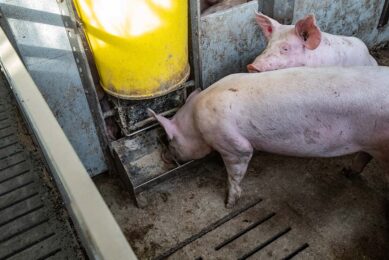
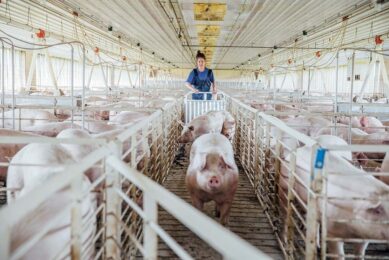
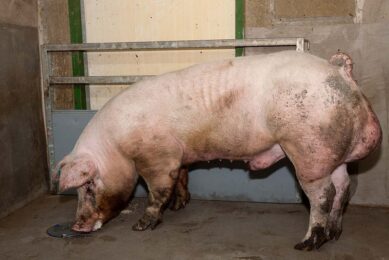
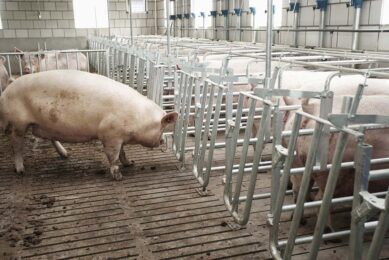





 WP Admin
WP Admin  Bewerk bericht
Bewerk bericht